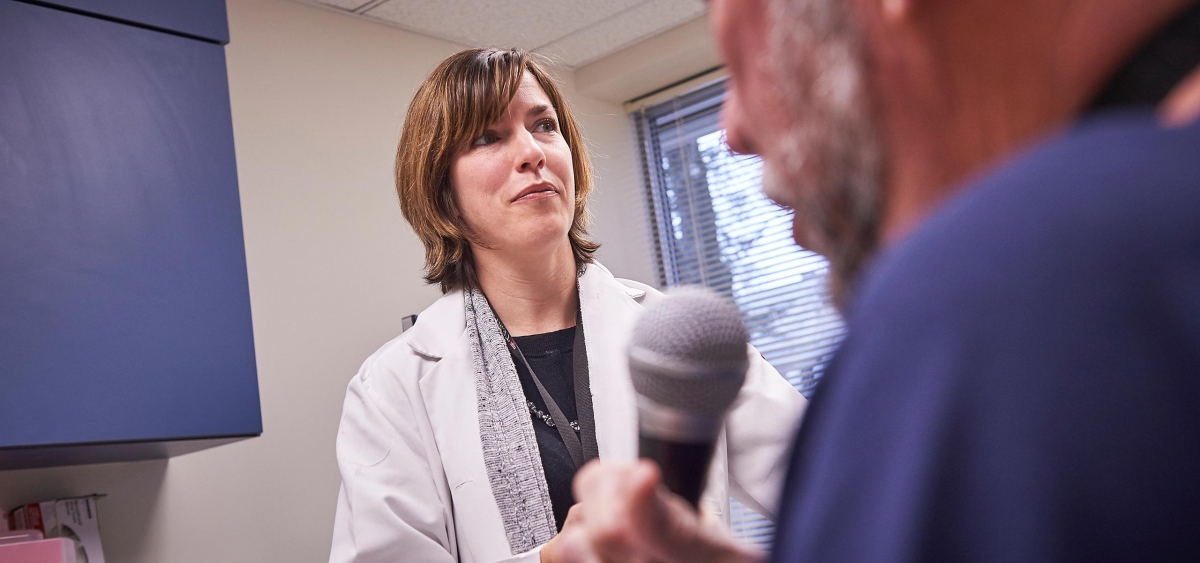
The clinical evaluation includes a careful review of the individual's medical history, an exam of the muscles and structures of the mouth and throat, assessment of speech quality, and assessment of swallowing function. This may include administration of food and liquid with clinician observation of signs and symptoms of swallowing difficulty during the act of eating and drinking. The clinician will review findings with the patient and together they will develop treatment goals. Based on the results of the clinical exam, the speech pathologist may recommend a more specific test.
Video Fluoroscopic Swallowing Study
A video fluoroscopic swallow study (also known as a modified barium swallow study) is a radiologic procedure that evaluates swallowing using a device called a fluoroscope. This procedure allows visualization of the oral, pharyngeal and esophageal stages of swallowing. The individual will be asked to swallow a variety of liquids and foods of various textures. A Speech Pathologist performs the test in conjunction with a Radiologist for a thorough assessment of anatomical as well as functional abnormalities. Areas of dysfunction, if present, will be identified as will any aspiration of food or liquid into the lungs. Strategies will be employed to eliminate aspiration during the test, and the findings will assist in treatment planning.
Functional Endoscopic Evaluation of Swallowing (FEES)
During a FEES procedure, a small flexible endoscope is passed through the nose into the throat . This procedure allows visualization of the pharyngeal stage of swallowing. The individual will be asked to swallow a variety of liquids and foods of various textures. Areas of dysfunction, if present, will be identified as will any aspiration of food or liquid into the lungs. Strategies will be employed to eliminate aspiration during the test, and the findings will assist in treatment planning.
Voice Evaluation
The voice evaluation includes a careful review of the patient’s medical history, an exam of the muscles and structures of the mouth and throat, manual assessment of extra-laryngeal muscular hyperfunction, perceptual assessments of voice quality, and acoustic measurement of vocal function including a multi-dimensional voice profile. Stroboscopy may also be indicated and performed on this day, or at a later date. The clinician will review findings with the patient and together they will develop treatment goals.
Digital Video Stroboscopy
The Digital Video Stoboscopy is a type of laryngoscopy using either a rigid or flexible scope that allows for more detailed examination of the larynx, including vibratory behavior of the vocal folds. The laryngoscope is connected to a camera with a magnified lens and a strobe (pulsing) light. Since the vocal folds move too rapidly for the naked eye to see, the strobe light slows the image of the vibrating folds and allows for more detailed interpretation
Air Insufflation Test
This is a test utilized to determine whether an individual is able to achieve voice when air pressure stimulates a segment of the pharyngoesophagus following a total laryngectomy. A small catheter is attached to the stoma and then inserted thru the individual’s nose into the pharyngoesophagus. Air is introduced into the pharyngoesophagus when the patient occludes their stoma and exhales and vibration of the pharyngoesophageal segment should occur. This test is sometimes performed under fluoroscopy in order to determine why voice is unable to be generated, and informs treatment planning.